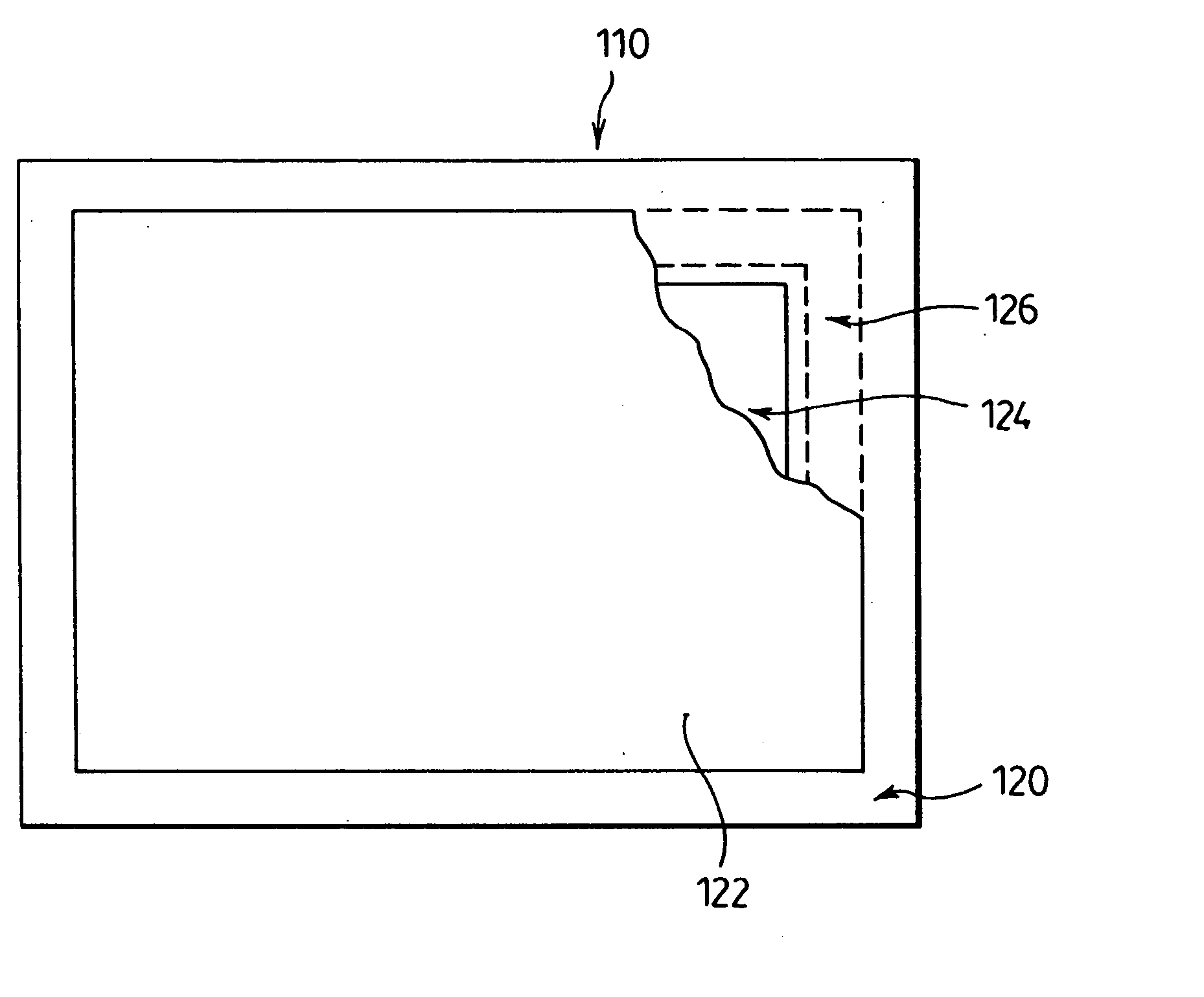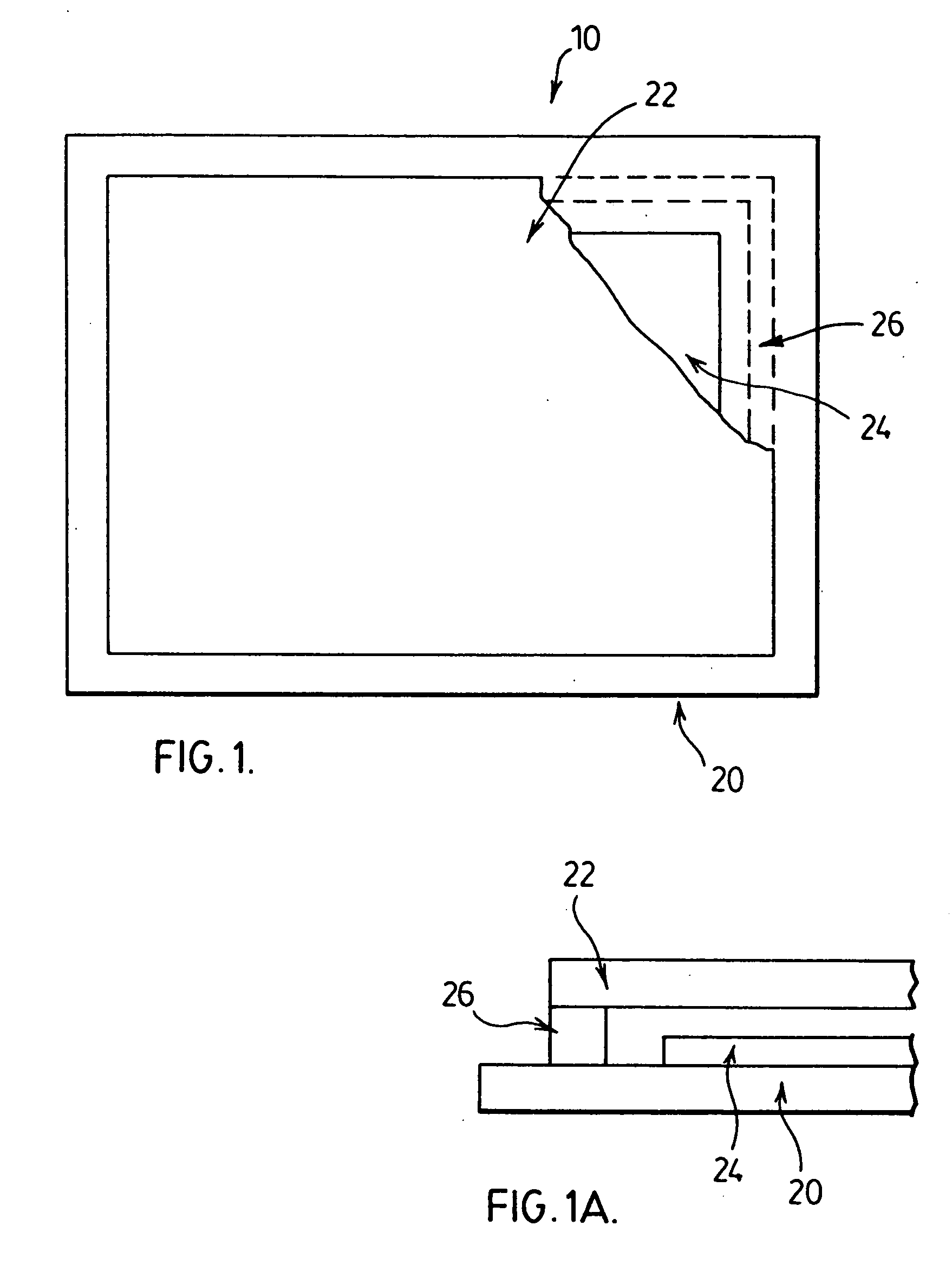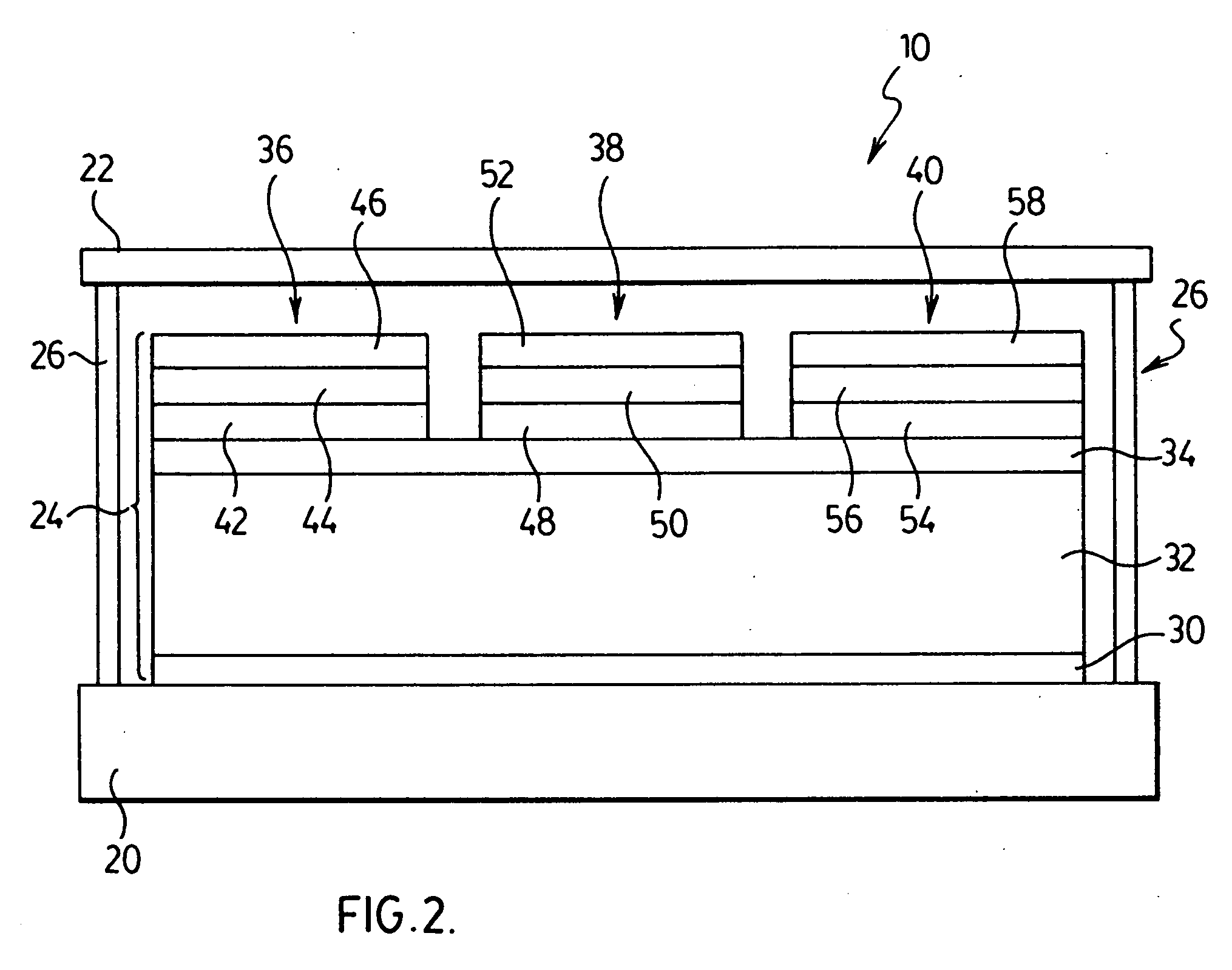Seal and sealing process for electroluminescent displays
a technology of electroluminescent displays and sealing processes, applied in the direction of discharge tubes/lamp details, discharge tubes luminescnet screens, electric discharge lamps, etc., can solve the problems of shortening the life of displays, reducing the luminosity of displays to usable levels, and reducing the efficiency of display operation, so as to improve the operating stability of displays and reduce the flux of atmospheric contaminants. , the effect of increasing the operating devi
- Summary
- Abstract
- Description
- Claims
- Application Information
AI Technical Summary
Benefits of technology
Problems solved by technology
Method used
Image
Examples
example 1
[0080] This example illustrates the ability of getter material, which is mixed into a sealing material, to absorb moisture from normal ambient air. 30Y-296C UV curable adhesive obtained from Three Bond International Inc. of West Chester Ohio, USA was mixed with 20% by weight of 3× molecular sieve powder having an average particle size of about 5 micrometers. Before mixing, the molecular sieve powder was first activated at 300° C. for one hour.
[0081] The mixed getter material and sealing material was subsequently spread on a plate to a thickness of 0.3 to 0.5 millimeters and UV cured to form a film. The film on the plate was then placed in air which contained 1500 parts per million water. The film was maintained at a temperature of about 23° C. and the weight gain of the film was monitored over time. FIG. 5 shows the weight gain of the film as a function of time. The weight of the film increased linearly over time by about 2.5% over 800 hours. For comparison, a similar film without ...
example 2
[0082] This example is similar to Example 1, except that the sealing material consisted only of UVS91 UV curable adhesive from Norland Products Inc. of Cranbury, N.J., USA rather than 30Y-296C UV curable adhesive. The results are shown in FIG. 6. FIG. 6 shows that the weight of the film containing molecular sieves increased relatively quickly over about 200 hours by about 2.5% and then became constant at about 3%. As for Example 1, there was no appreciable weight gain when the sealing material did not contain molecular sieves. This example shows that the permeation rate for water in the UVS91 UV curable adhesive is significantly faster than it is for the blended adhesive of Example 1.
example 3
[0083] This example shows the ability of a getter material, dispersed in a sealing material, to reduce the partial pressure of water vapour in a sealed volume. A 0.225 gram sample of 13× molecular sieve dispersed in UVS91 UV curable adhesive, similar to that of Example 2, was enclosed in a 130 cm3 sealed cell fitted with a dew point probe. FIG. 7 shows the measured water vapour concentration in the cell as a function of time. The moisture content in the cell was reduced to about 100 ppm in about 100 hours, which shows the efficacy of the material to absorb water at low vapour concentrations.
PUM
 Login to View More
Login to View More Abstract
Description
Claims
Application Information
 Login to View More
Login to View More - R&D
- Intellectual Property
- Life Sciences
- Materials
- Tech Scout
- Unparalleled Data Quality
- Higher Quality Content
- 60% Fewer Hallucinations
Browse by: Latest US Patents, China's latest patents, Technical Efficacy Thesaurus, Application Domain, Technology Topic, Popular Technical Reports.
© 2025 PatSnap. All rights reserved.Legal|Privacy policy|Modern Slavery Act Transparency Statement|Sitemap|About US| Contact US: help@patsnap.com



